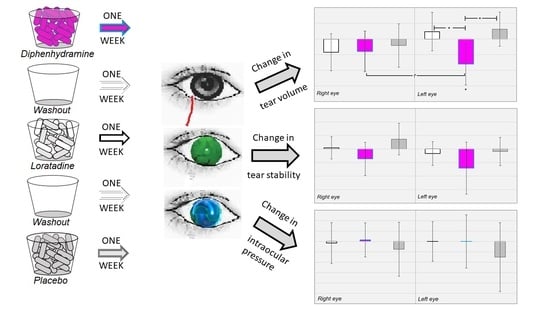Effects of Oral Antihistamines on Tear Volume, Tear Stability, and Intraocular Pressure
Abstract
Share and Cite
Foutch, B.K.; Sandberg, K.A.; Bennett, E.S.; Naeger, L.L. Effects of Oral Antihistamines on Tear Volume, Tear Stability, and Intraocular Pressure. Vision 2020, 4, 32. https://doi.org/10.3390/vision4020032
Foutch BK, Sandberg KA, Bennett ES, Naeger LL. Effects of Oral Antihistamines on Tear Volume, Tear Stability, and Intraocular Pressure. Vision. 2020; 4(2):32. https://doi.org/10.3390/vision4020032
Chicago/Turabian StyleFoutch, Brian K., Kyle A. Sandberg, Edward S. Bennett, and Leonard L. Naeger. 2020. "Effects of Oral Antihistamines on Tear Volume, Tear Stability, and Intraocular Pressure" Vision 4, no. 2: 32. https://doi.org/10.3390/vision4020032
APA StyleFoutch, B. K., Sandberg, K. A., Bennett, E. S., & Naeger, L. L. (2020). Effects of Oral Antihistamines on Tear Volume, Tear Stability, and Intraocular Pressure. Vision, 4(2), 32. https://doi.org/10.3390/vision4020032






